Sound
Contents
For me, what makes a HiFi system sound convincing is primarily weight and color. I have to believe the performers are present and they’re not all White Walkers from Game of Thrones. They have to have a gravitational pull and elements of life and texture. When the artists and instruments have curvature and form, that’s a great indicator of a higher performance system. Unfortunately, having more of one usually takes away from the other. The more solid a sound is, the less “golden” it’ll sound. As with everything in HiFi, it’s a subjective balancing act.
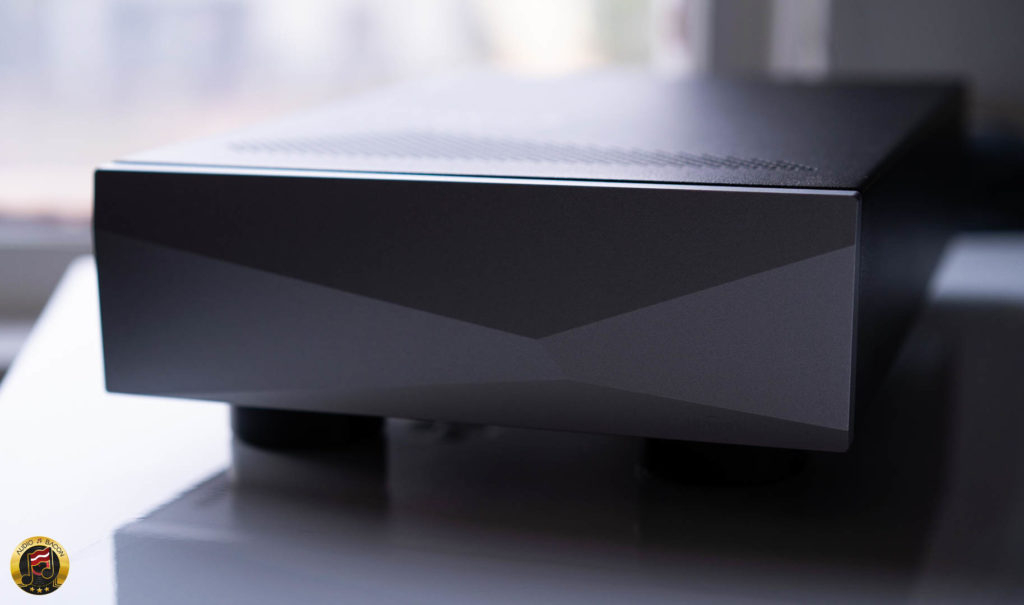
I started by spending time listening to a few playlists directly from the Innuos server without any USB conditioning. It was clear what was missing but I couldn’t gauge the magnitude. Then I connected the Phoenix and the aural gains were very obvious. The first thing I noticed was tonality. It was like the music got hooked up an IV bag of blood. Secondly, there was a much more three-dimensional presentation. Not just in width, depth, and layering but in the shapes of the performance.
For example, Damien Rice & Lisa Hannigan’s 9 Crimes gives you chills as her voice first fades in. It comes in from black and there’s an immediate sense of guilt and dread. The same goes for Bank’s You Should Know Where I’m Coming From. Goosebumps from start to finish. There’s also a delicacy yet strength in how strings and percussions play out in Eric Clapton’s Unplugged album. Playing these same tracks without the Phoenix – and the engagement is nonexistent. It’s relatively flat and anemic – and doesn’t make your hair stand.
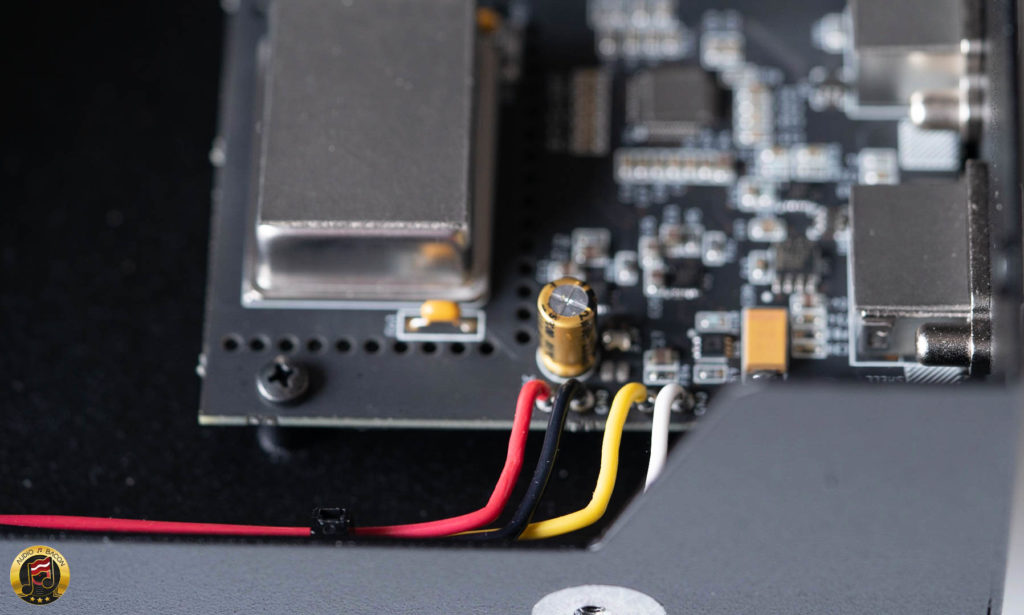
Making Things Right
The Innuos Pheonix is one of those components where you don’t really need much A/Bing to hear the differences. When I remove the Phoenix, the music flattens out, the texture is smoothed over, edges are blended, and there’s a hint of confusion even when the recording isn’t busy or complex. Also, pieces of the recording aren’t social distancing at all. It sounds more like clumps placed in random parts of the soundstage. And positioned unnaturally close together. In essence, everything is painted with a broad brush without attention to depth, focus, or detail. For lack of a better word, it sounds “generic.”
Once the Innuos Phoenix is plugged in, the first thing you’ll hear is the tonal variations. You start to realize that the track you just heard (without the Phoenix) actually has a full palette of colors (as opposed to just one). Instead of sounding more superficial, it provides an enormous amount of depth and precision. It also warms up the tone organically for both voices and instruments. It just makes for a more convincing and emotional listening experience.
Mo’ Bass
For whatever reason, bass quality improves tremendously with the Phoenix. I know all this stuff is digital but the bass was far more prominent with the Phoenix. My guess is that this is due to the high-quality Sean Jacobs power supplies. I actually thought my subwoofer was off when I was testing the direct to DAC connection. It was on. But with the Phoenix in between, it not only rumbles and slams, but it also does so with a gradation of detail and strength. Simply put, piano notes have more weight, kicks have more punch, and there’s just more music going on. Without the reclocker, the bottom felt empty, restricted, and tamed.
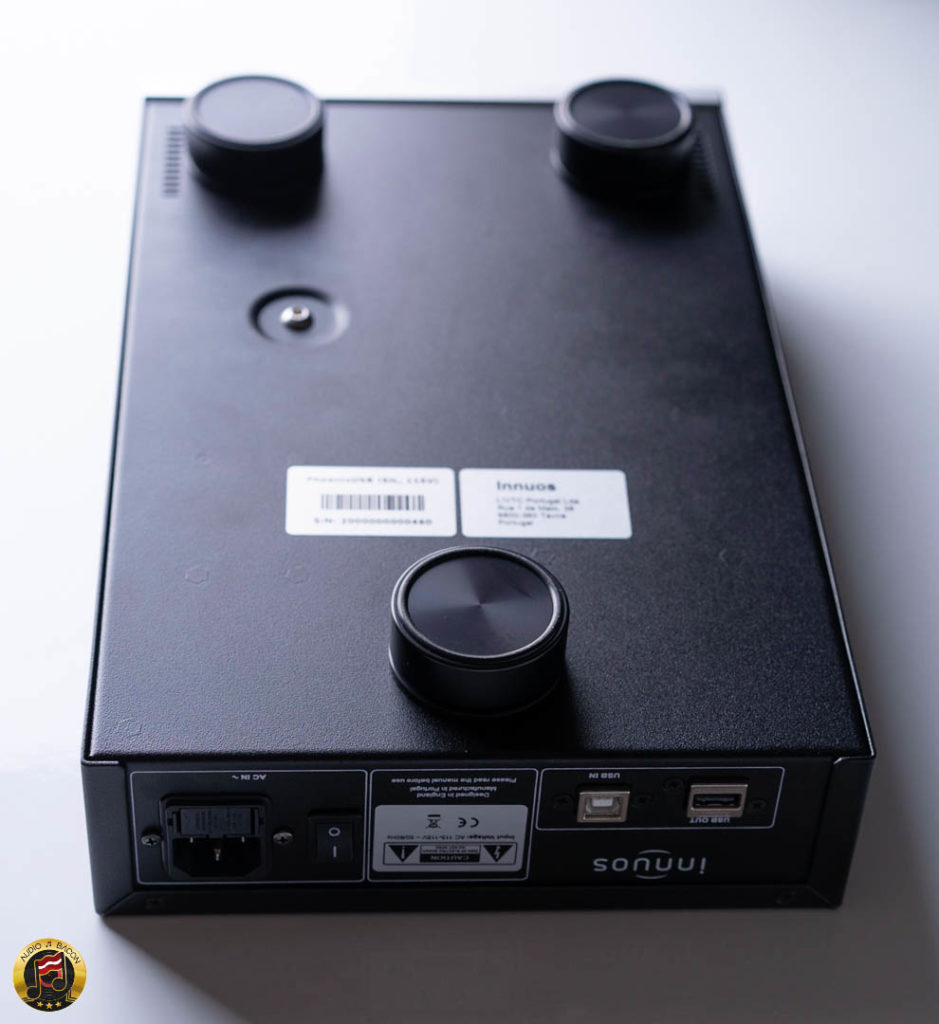
Gorgeous Vocals
The Phoenix presents a more wholesome and fuller sound. This is especially great for vocal-centric recordings. Lana Del Rey, Adele, Anna Clendening…they all sound grounded, focused, and never “floaty.” The vocals are confident and anchored dead center. There’s just an undeniable humanistic essence that was left hidden prior to the Phoenix.
As mentioned, timbre is also vastly improved when using the Innuos Phoenix. Consequently, there’s a varied amount of “flow” and density that comes with that. For example, in Us the Duo’s No Matter Where You Are, the overlapping male and female vocals never conflict with each other. The couple has their own identity and heft to their voices – and it harmonizes more coherently.
This doesn’t just apply to the main artist but the audience as well. In Alicia Key’s VH1 Storytellers, the Phoenix enables you to gauge the size and differentiate precisely which cheers are from male or female participants. Without the Phoenix and suddenly the participants get cut by 80% and they all sound like the same person.

Natural Transparency
In HiFi, the descriptor “transparency” gets thrown around a lot. Many times it translates to hyper resolution without any soul. I feel the Phoenix does transparency the right way. For example, without the Phoenix, the water at the beginning of Gary Girouard’s Water sounds more like it’s coming from an icy glacier than a water stream in a forest. You miss out on the rocks, trees, and twigs. The Phoenix makes these subtle tonal and textural cues more apparent. It’s transparent yet still tonally accurate.
I just hear each piece of the music more clearly. Not just from a resolution standpoint, but in weight and character. Removing the Phoenix and the music becomes more “undefined.” The Phoenix solidifies the atmosphere but keeps the music alive. It just digs deeper and carves out more texture. I just feel more engaged with the rhythm and dynamics of the music.
Holistic Impression
If I were to step back and summarize, these would be my thoughts. It just sounds like the music takes up space in your room rather than being projected in front of you. Luckily the Innuos Phoenix provides an incredible digital foundation to build upon. You could focus on getting the right speakers, amplifiers, and cables without having to worry too much about problems from the source. I can’t really find any faults with the Innuos Phoenix reclocker. It does what it was designed to do incredibly well. And it might be more important than the server itself.
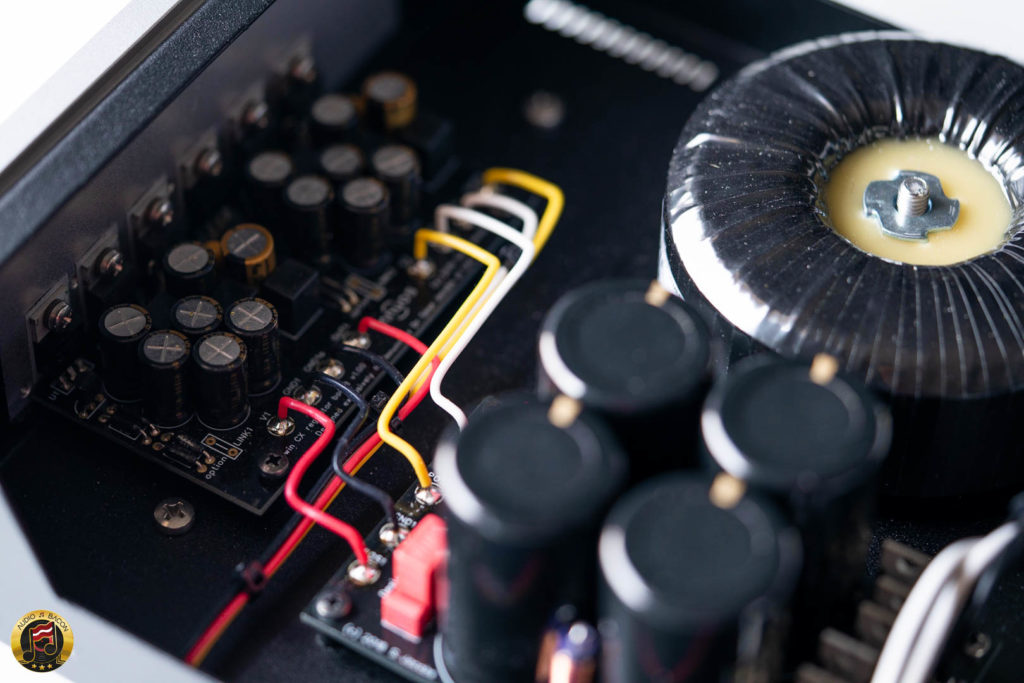
Comparison with the SOtM tX-USBultra
So obviously I have to compare this with my current reference, the SOtM tX-USBultra. To make things a little fairer, I used a Paul Hynes SR4 9V to power the SOtM. I tried using a battery pack but you lose an enormous amount of size, drive, and dynamics. Although it does have a clock input, I didn’t use one for this comparison. Although having a master clock did improve the realism in resolution and timing – it often takes away soul. But I may revisit this another time.
So off the bat, both of these options are far better than no USB conditioner/reclocker. To the point where I think if your library is mostly digital, you’d want to invest in one. It’s worth the money. Now as far as sound, they both do different things well.
First, the SR4 and SOtM tX combination sounds amazing. The Paul Hynes power supply is clearly able to maximize the capabilities of this USB conditioner. As far as noise, the background is lacquer black. Imaging is solid and even the most complex nuances were layered with the right amount of footing. There’s just this incredible control over the extrusions and speed of the sound. For what it’s worth, the combination of the SR4 and tX still has a smaller footprint over the Phoenix but requires a DC cable. This comparison just reaffirms the importance of having a cleaner USB signal.
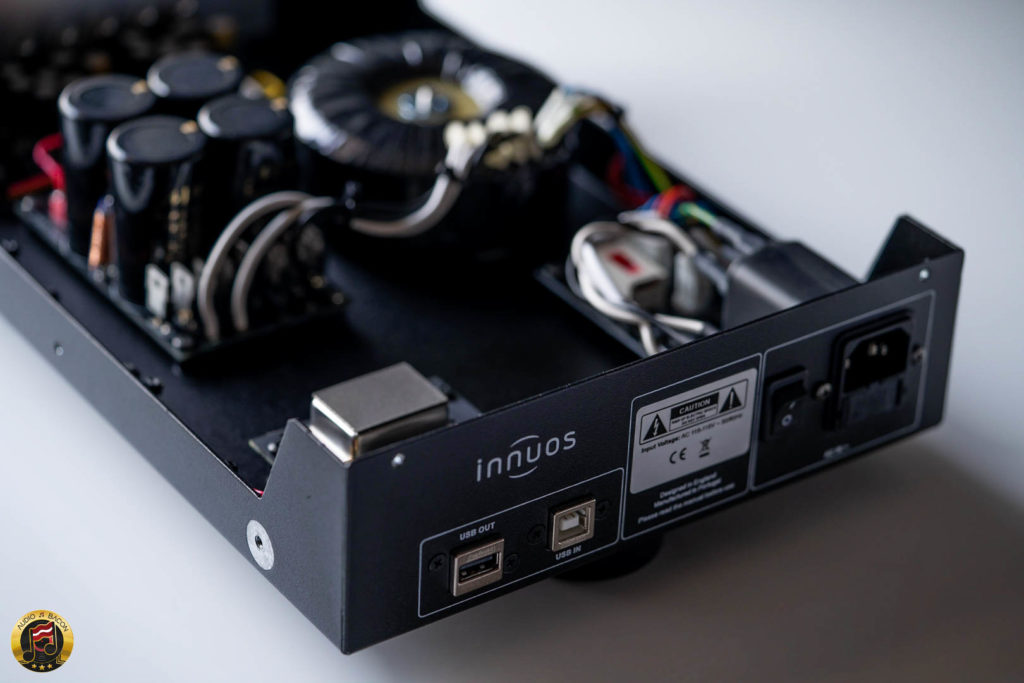
The Bosses
Having used both battery and the Paul Hynes SR4 on the SOtM tX-USBultra, I realized that its tone is more grey and neutral relative to the Phoenix. That’s probably the biggest difference between the two. The Phoenix has more “blood and tissue” and I found it to be more tonally true. Both handle timbre well.
The Phoenix also has more grit and texture while the tX-USBultra is fuller and smoother. While listening to a few tracks by Kieza, I felt the Phoenix had more realistic decay where certain harmonies lingered for the right amount of time. This actually brought me closer to when I saw her performing live. But the tX sounded more molded and solid. And thus gave more of the impression of a physical presence. Silhouettes are seemed tighter and more “rounded off” with the tX-USBultra.
Another difference is depth. The Innuos has more of it. The SOtM stays more in front and sounds more “glued together.” Whereas the Innuos plucks out the elements better. It handles the fabric of the music with more delicacy and nuance. It’s also the more open sounding of the two. The SOtM is more “collected” and laid back. Lastly, the Innuos has more impactful, deeper, and refined bass. The SOtM has more aggregated mass that is punchy but not as granular.
If you prefer a liquid, more solid, and more neutral sound, the SOtM tX-USBultra is probably the better pick. If you prefer something richer, more open, and warmer, go with the Phoenix. Although I appreciate the qualities of both, I prefer the more natural tone of the Phoenix.
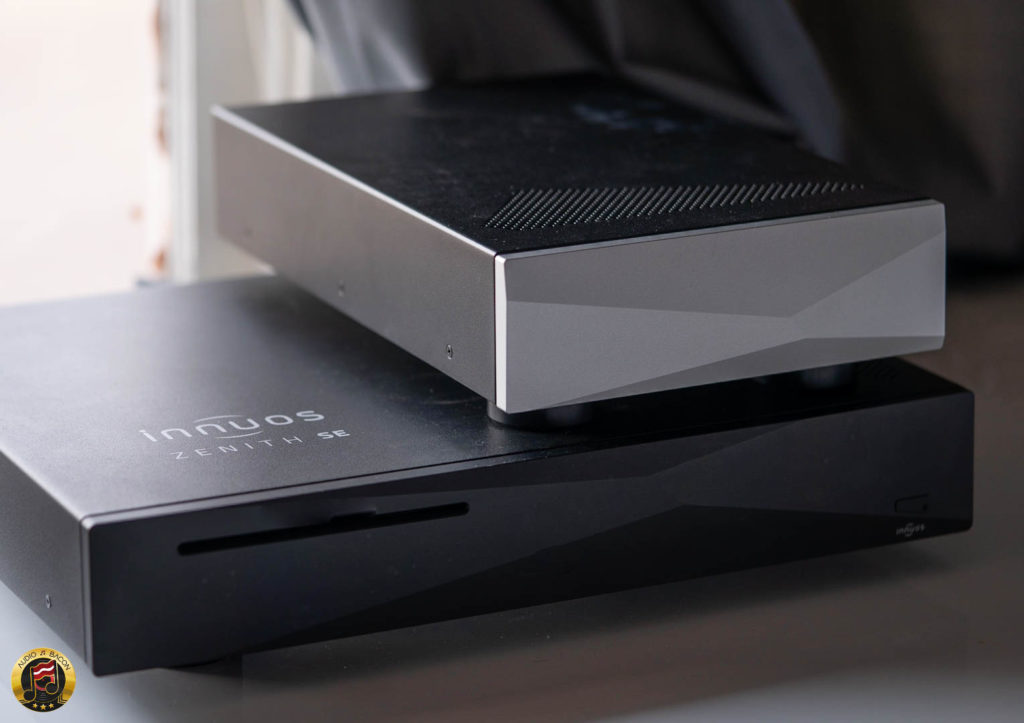

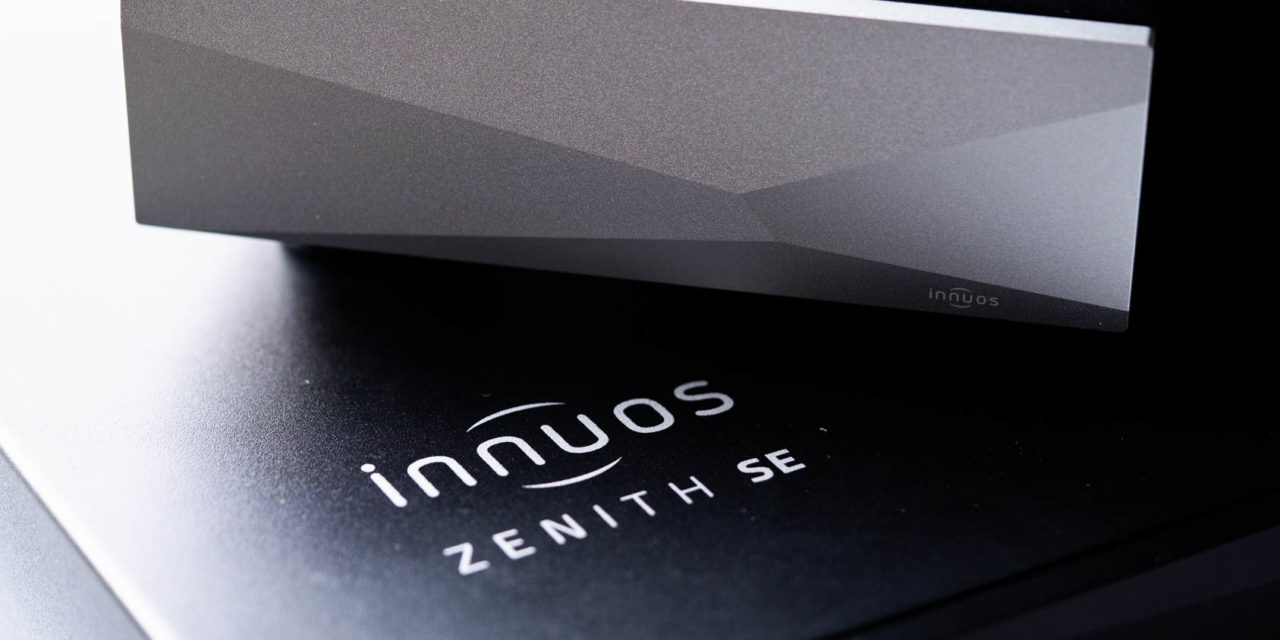


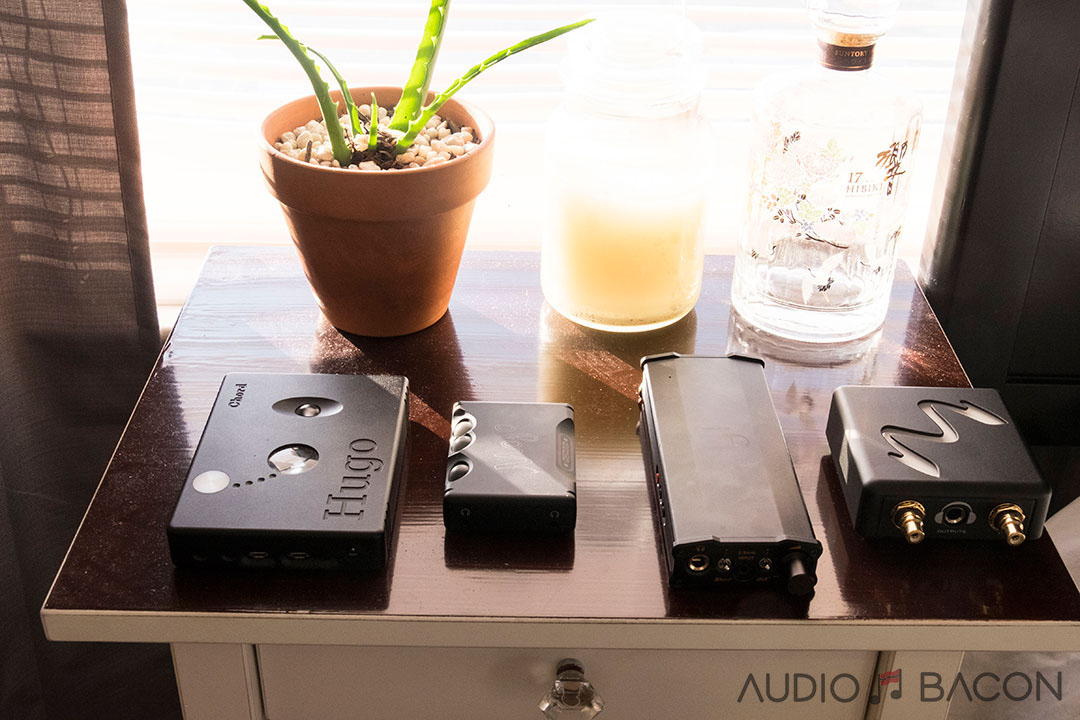


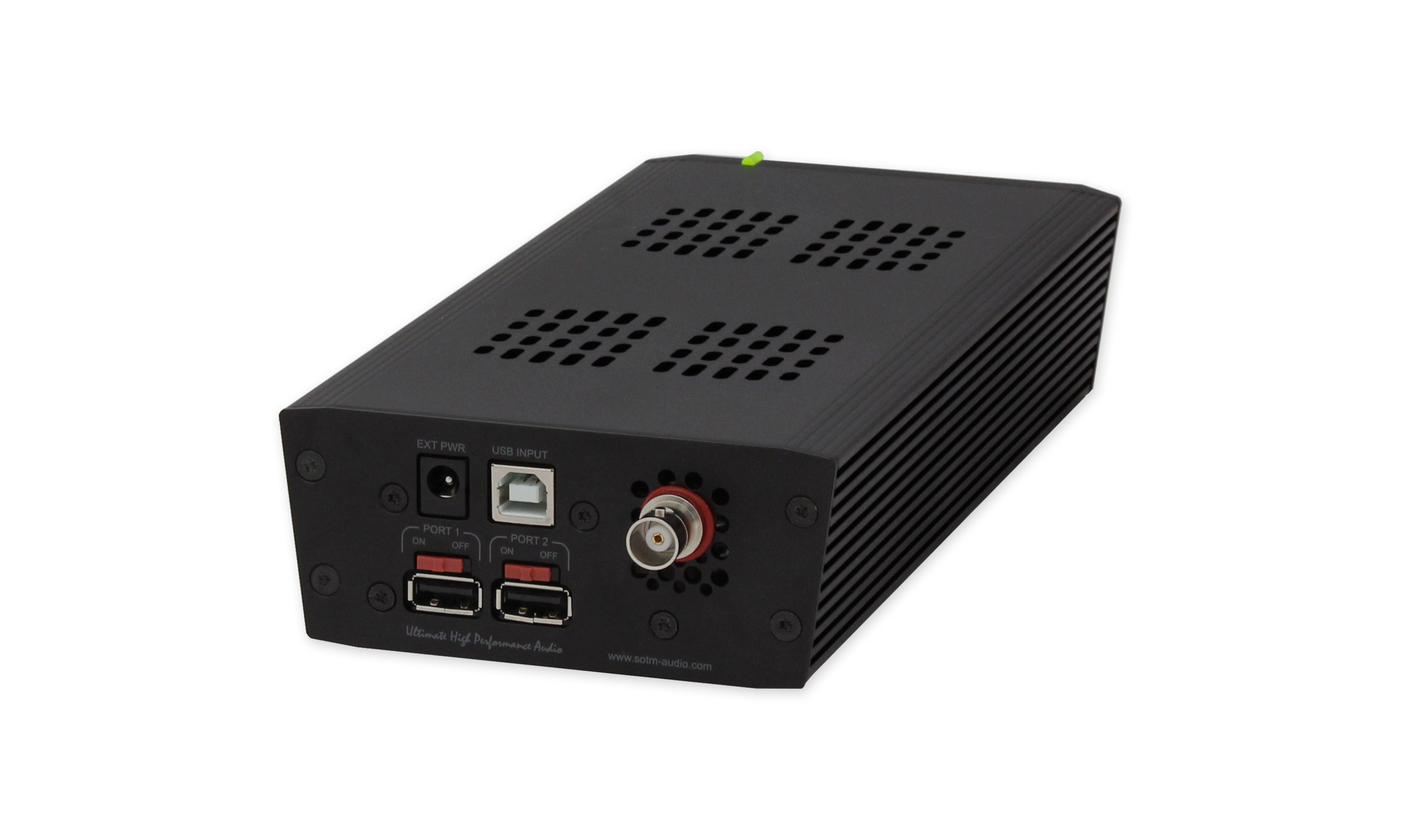

I purchased the Phoenix a few months ago. I’d say it improved the performance by several hundred [maybe 500] percent.
In terms of servers/renderers, I progressed from the Antipodes DX2 with Squeezebox to the DX3 with Roon, to the CX/EX w/Roon.
On the CX/EX I’d say there was a 50% improvement over the DX3 and prior upgrades were in the 20-25% scale.
The Phoenix finally made my high-end system enjoyable to just listen to. Great review Jay.
Through the review, I learned that that better USB cable should front-end the Phoenix. I had it the other way around with a WireWorld Platinum Starlight 8 USB to the input and a newly acquired Tellurium TQ Silver Diamond USB out of the Phoenix.
Putting the Tellurium before the Phoenix, the system really calmed down and became much more refined.
Glad that worked out!
I found that out too. I had it the other way around and when I changed them out, marked improvement. And it was already fantastic! So glad I bought the Phoenix for my Zenith Mk lll.
I have an Uptone EtherRegen between the Antipodes CX server and EX renderer with the Antipodes -supplied reference Ethernet cable out of the EtherRegen and a Supra Ethernet cable preceding it.
Inspired by my experience placing the better USB cable [Tellurium TQ Silver Diamond] BEFORE the Phoenix USB Regen, I did the cable swap on the EtherRegen and it sounds better. I found very positive comments on the JCAT Ethernet Signature Gold cable over the supplied Antipodes Ethernet cable between CX & EX so I bought a pair. Also ordered a second Tellurium TQ Diamond USB cable to replace the WireWorld Platinum Starlight 7 USB which [in my setup] has unrefined treble. Thank you again for the value-add in your comprehensive reviews Jay.
Yeah, I was taken aback at how much the improvement actually was. As with you, the system is just substantially more enjoyable with the Phoenix. Definitely wasn’t planning on spending more money. Oh well. 🙂
Great review Jay!
Just a question, I use Chord Hugo M-Scaler+Hugo TT2 ( With Paul Hynes SR7 Turbo PS) both Hugo reclock the input signal, so I wonder if the addition of the Phoenix is worth in this case.
Thanks!
I used the TT2 + HMS for this review. And yes, it’s worth it. Still night & day. If the HMS gets fed a bad USB signal, it won’t fix that.
Great review. I have a Phoenix on the way. I wonder if the same comment could apply to using the Phoenix with the Dave. I recall one of your articles where it was asked whether the Dave was immune to source.
To my ears, Dave is improved with the Phoenix as well.
Great review, as always. My thoughts on this are that it shows that USB is seriously flawed if you need such an expensive device to “fix” it. Is it an argument for avoiding USB and going with “tried and trusted” SPDIF, for instance? And then put the money saved into other gear? However, if USB is the future of digital audio, then at least devices like this means it will sound good.
Some higher-end consumer motherboards now have “USB DAC UP” ports” that are supposedly separately powered and have lower noise. I’ve yet to try it. Comparing an optical from a laptop vs. the usb + phoenix…the usb + phoenix still sounded significantly better. Haven’t tried coax.
Hi Jay,
Enjoyed your review, probably the most informative so far. If possible, would love to hear how the Phoenix compares to the Antipodes S20 and Playback Designs Stream IF.
Mike
Do give the Sablon 2020 USB cable a try when you can.
Hi Jay, thanks for your insightful review. Having Zenith Mk3 and Hugo TT2 myself, I wonder where I would have more sound-bang for the incremental-upgrading buck: adding the Phoenix or the MScaler, as soundstage / timbre / micro-dynamics benefits appear comparable? Thanks for replying.
Hi Jay, great review. Having Zenith Mk3 and Hugo TT2 myself, which upgrade would you prioritize: Phoenix or HMS, given by the sound of it comparable improvements in sound stage, timbre, and micro dynamics? Thanks, and keep up the good work 🙂
hmmmmm, the TT2 sounds MUCH better with the HMS. And the fact you could hook up your PC and other devices to it…
If you’re not playing super hi-res stuff, I would get the HMS and hook up an optical cable. If you are…then the Phoenix makes a huge difference for a USB DAC.
Sounds like a great product. I use an Isoregen with an LPS that outputs to a WEISS 204 also with LPS that then feeds the dac via BNC. A massive difference over the Metrum Adagio USB input. Two questions come to mind – first is whether a top high end dac will benefit and second whether anyone has had experience with the Ideon Master of Time. A few reviews suggest that this is even better as a reclocker.
Hi jay,
Any chance to do a comparison between the SOtM tX-USBultra, Innuos Phoenix and the new Ideon Audio – 3R Master Time ?
I have the SOtM tX-USBultra and I was wondering if the Ideon Audio – 3R Master Time will be great upgrade.
Thank You
Hm, I’ll have to get the 3R Master Time in for review.
Definitely !
3R Master Time Vs Innuos Phoenix USB Vs tx-USBultra .
Steven Plaskin from audiostream.com said the exact opposite opinion about which is the more critical USB Cable.
“I tried a number of different USB cables but settled on the AudioQuest Diamond and Wireworld Wireworld Platinum Starlight 7 USB 2.0 cables. My evaluations found that the critical USB cable was the one used from the tx-USBultra Regenerator to my Ayre DAC. The USB cable between the sMS-200 and the tx-USBultra was found to be less critical to the overall sound.”
Interesting…
I think this was the case for the tX…but not the Phoenix.
It was the SOtM tX-USBultra indeed. So it doesn’t apply to the SOtM tX-USBultra ?
Would the SOTM tx-Ultra SE plus iso region equal a more similar result to the phoenix?
The iso regaon is tonally fuller and more relaxed than the SOTM…
I think a more fair comparison of the usb-tx ultra SE to the Phoenix would be to put a Paul Hynes SR-7 Turbo LPS as it’s power source. This model substantially outperforms the SR-4. The cost of the SR-7T LPS plus the SOTM piece is still LESS than the Phoenix alone- and I feel it is only fair to maximize the potential of the SOTM unit as much as possible so long as the price remains in the same range as the Phoenix when making the comparison.
I am using ifi iusb3.0 reclocker. Do i get any benefit if addon a pheonix into my setup. My current setup is laptop aq usb cable to ifi iusb3.0, iusb3.0 to my khadas tone board dac, then rca to my preamp.
Great review.
My Phoenix arrived yesterday. I was pretty tired after work last night (having taken my son out shopping for ski boots, shopping for and cooking dinner, etc) so wasn’t motivated to unbox and plug it in. Just before bedtime I thought the least I can do is to make the effort to plug it in and let it warm up overnight so that it was ready to go this evening. Having done that I thought I’d have a quick listen. 1.5 hrs later I was still listening. From the first minute of listening I could tell that the Phoenix was having a huge effect on my system (Zenith mk3, MScaler, Dave) for the better. I’d read all the reviews available online (including yours) and it does everything they say this unit does, but the one thing that stood out for me was the improvement in the timing. It had my feet tapping along to the music which for me is one of the major things that separates sound from music. Previously I’d been listening to my digital setup and thinking this sounds really nice but I didn’t quite feel the level of engagement that I felt I should. For me, by adding the Phoenix the engagement was there and sound became real music. PRat rules! Highly recommended!
Just another comment on cables. The supplied cable is not bad at all. I had it between the Phoenix and the DAC and replaced it with an Audioquest Coffee. OK not as expensive as the ones you tested but a not bad cable. The Coffee was warmer, richer and boomier I thought that the stock cable. However it gave up a bit in detail and stereo separation. My ears prefer the latter hence I reverted to stock. I have a Curious USB cable from Zentih Mk3 to Phoenix
Does this product eliminate jitter and distortion that is so prevent in USB signals coming from a computer?